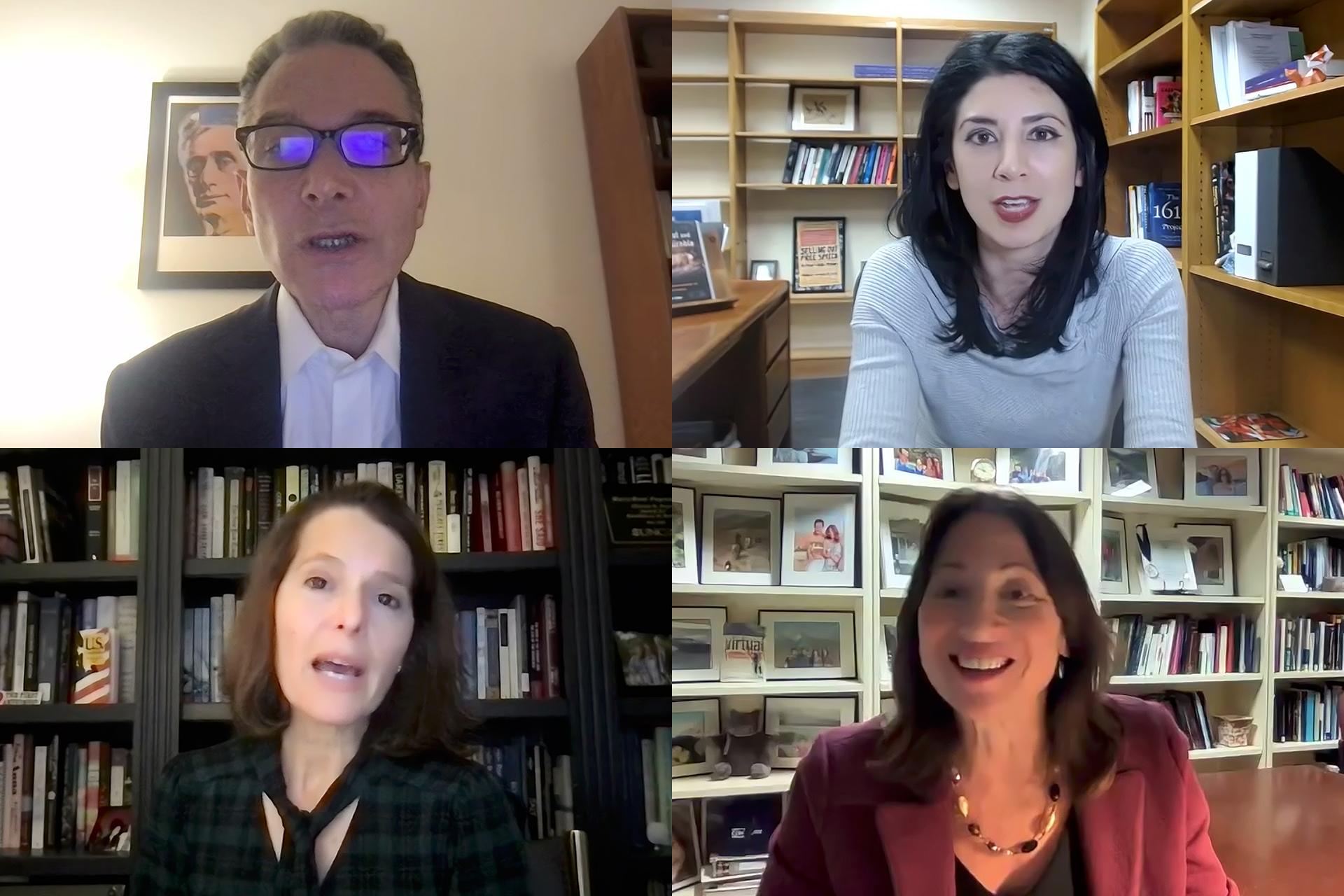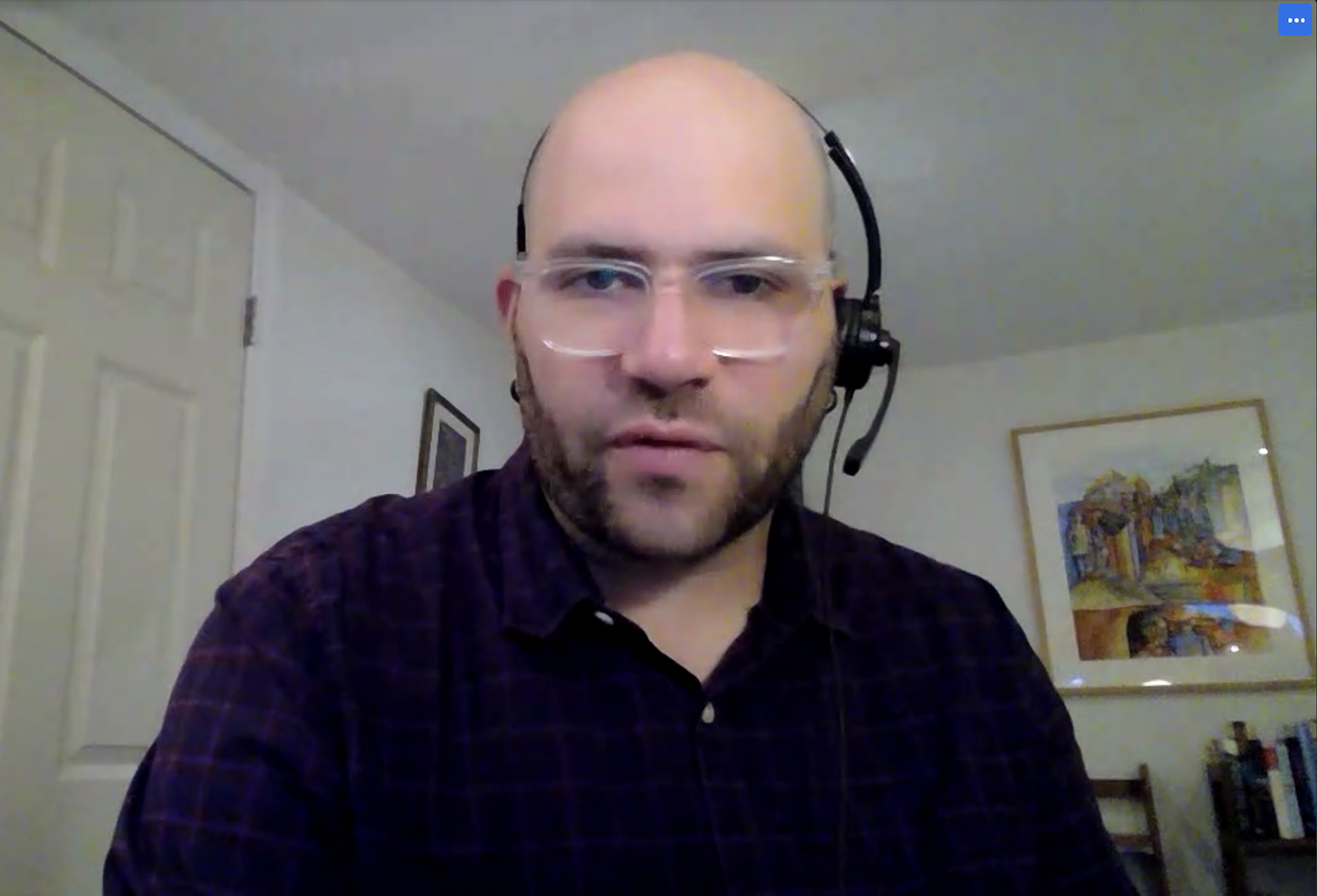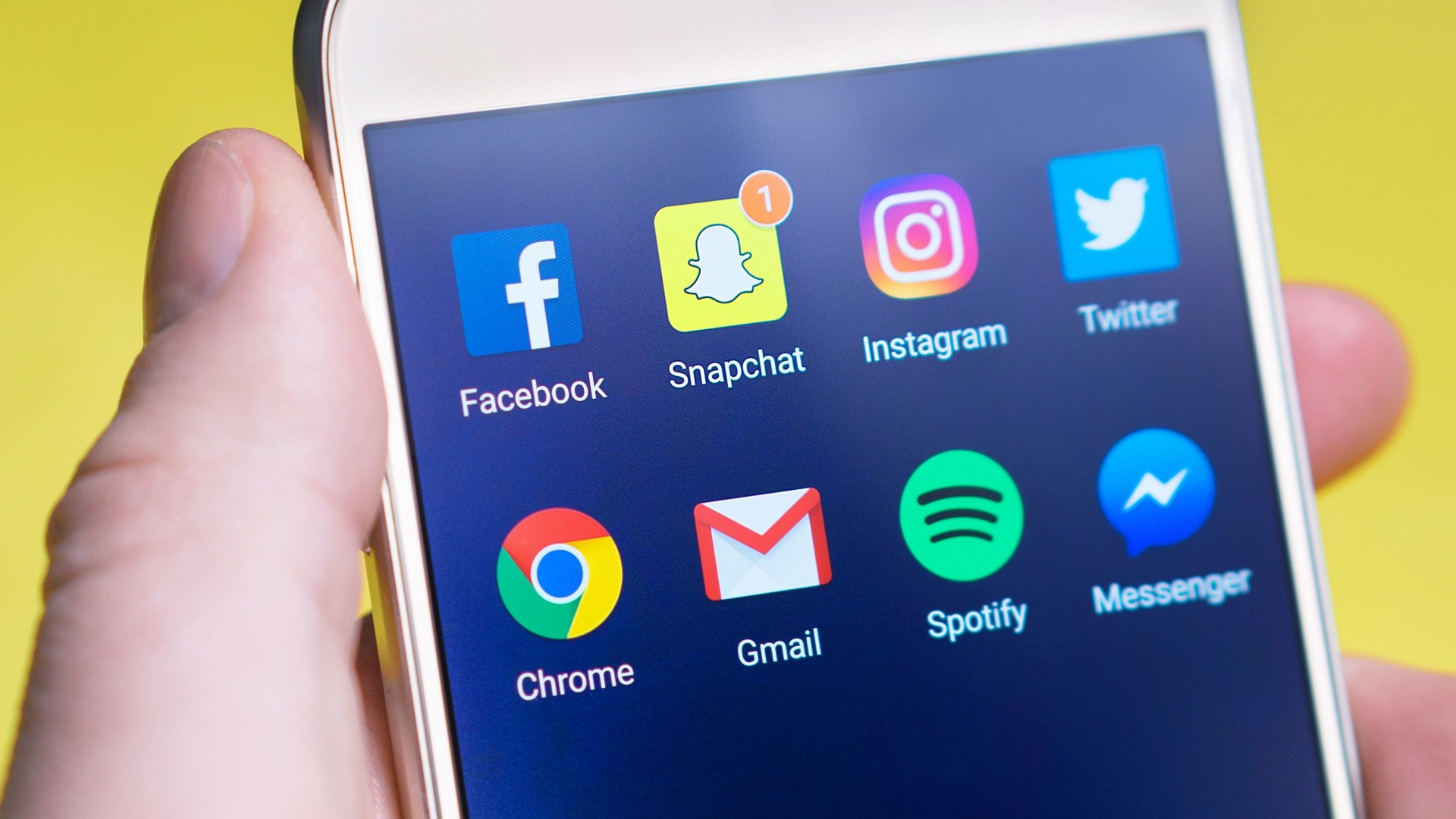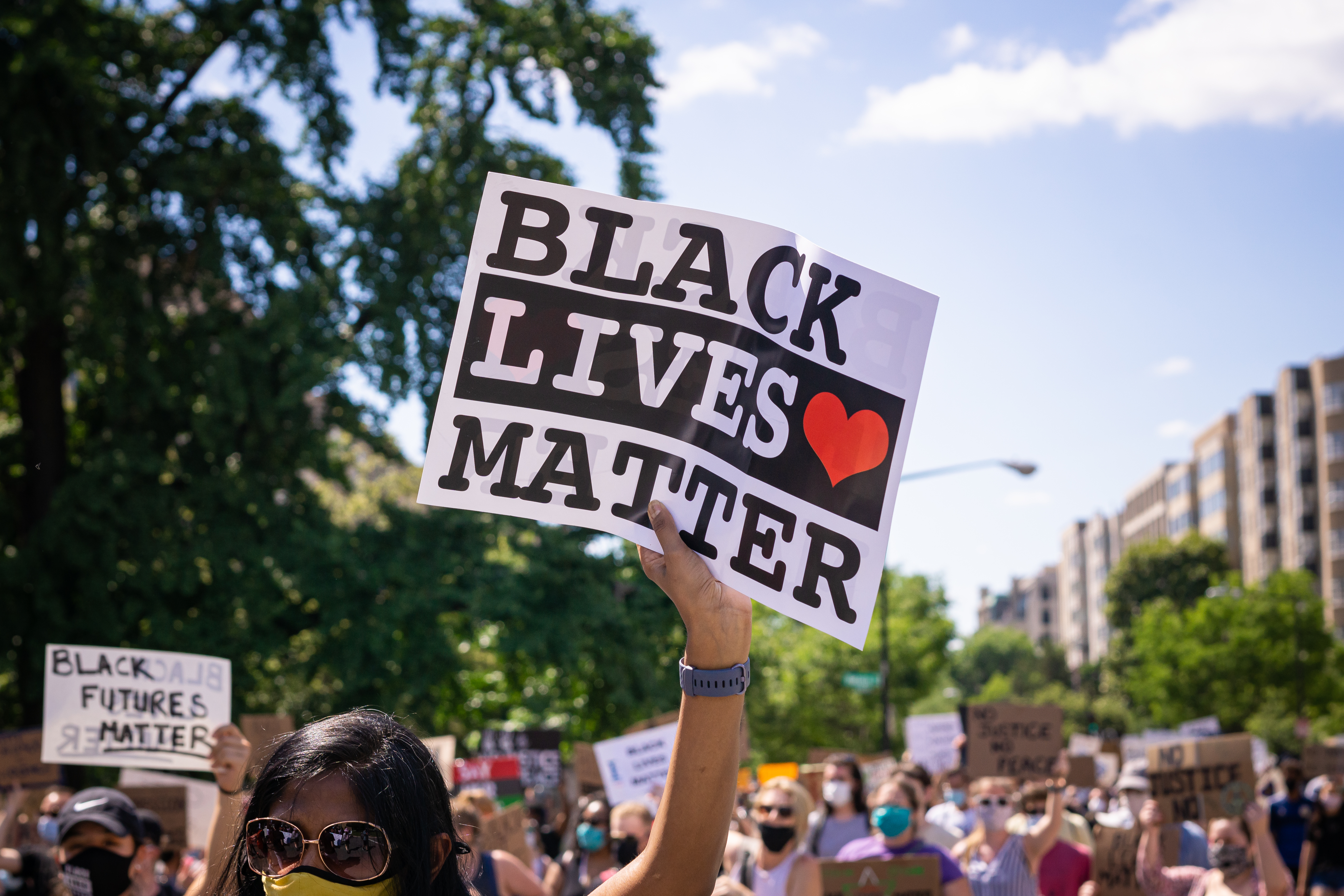“What are the free speech rights of university students?” That was the first question posed by moderator Jeffrey Rosen, GW Law professor and president of the National Constitution Center, to a panel of George Washington University faculty experts on the First Amendment.
The webinar, Free Speech v. Hate Speech: First Amendment Scholars Discuss Where to Draw the Line in the Context of Higher Education, was held as part of the university’s plan for strengthening the GW community in challenging times, with the goal of fostering civil conversations about complex issues and emphasizing university policies.
The incoming inaugural Burchfield Professor of First Amendment and Free Speech Law, Mary-Rose Papandrea, began by noting that the First Amendment applies to public and not private universities, but private universities often look to the First Amendment principles for guidance. Under the First Amendment, she explained, some categories of speech receive no First Amendment protection, such as incitement of unlawful conduct, threats of violence, or giving material support to terrorists. But offensive speech and “bad” words are not carved out from the First Amendment. In a public university setting, however, there is some leeway for penalizing speech that would be otherwise protected. She suggested classrooms provide the best example of this.
“When I ask a student to tell me the holding of a case, I actually want the holding of the case, and there is a wrong answer,” Papandrea said. “And if the student doesn’t give me the correct answer, that will result in a lower grade in the class. Outside in the town square you can engage in false speech, incorrect speech, or misrepresentations and cannot be, as a general matter, punished by the government.”
Most of the tensions surrounding free speech on campuses today, she added, arise when universities attempt to regulate the speech of faculty and students outside of the classroom.
“Universities are the quintessential marketplace of ideas,” Papandrea said, “and we should be really concerned when the university starts making viewpoint-based speech restrictions outside of the classroom.”
First Amendment: Does everything go?
In the view of Mary Anne Franks, Eugene L. and Barbara A. Bernard Professor in Intellectual Property, Technology and Civil Rights Law, free speech issues are clouded by unequal power relations, often resulting in protection of reckless speech for the majority but not for minorities. Franks proposes an alternative paradigm encouraging what she describes as fearless speech.
“If we really want to talk about free speech, we actually need to get away from the First Amendment—I mean the kind of popularized version of the First Amendment which says everything goes, and you can never have any kind of intervention,” Franks said.
People operating under this misconception, she added, argue that any kind of devaluation or nonplatforming constitutes censorship. That idea, she said, is “pernicious.”
“When we think about what the First Amendment actually does, it’s not really telling us anything about free speech,” Franks said. “It’s telling us about what the government can’t do in certain contexts. And that’s really useful to know, because the government has a lot of power that no individual has and because the kinds of measures it can take against you include the loss of your liberty. But I don’t know that it’s such a good model for us as a private university. How much are we like a government? What we could be doing instead, and what I think successful universities do when they want to be marketplaces of ideas or spaces for intellectual, robust debate, is set standards. What are the good ideas? Whether an idea is controversial or noncontroversial is not the point.”
Instead, Franks said, ideas should be well informed and argued eloquently. She argues in favor of a “conscious curation” of the best ideas that reflect the university’s values, expressed as persuasively as possible without threats of force or ad hominem attacks.
“What is the kind of speech that a university could uniquely try to foster?” she asked. “What kind of space could it foster to become a forum where really difficult ideas get aired out in a way that is physically safe but also sophisticated? I’m suggesting that we move toward fearless speech and critiques of current power structures, that we take notice of the fact that reality is a certain way. There are certain sensitivities to race and gender and class that we really need to have on our radar, if we want to make sure that people within the university space can speak equally.”
Free speech at a private university
Dawn Nunziato, Pedas Family Professor of IP and Technology Law, agreed that the First Amendment is not necessarily the right one for every context.
“At a private university like GW, we have the autonomy and the freedom and the duty to decide what kind of community we want to be,” Nunziato said, “and within certain bounds, what types of speech we want to protect and to not protect. Our speech policies are not governed by the First Amendment. So we don’t need to protect hate speech in the same way that the First Amendment protects hate speech. We could draw the line very differently. And there are reasons why we should, and we should be very thoughtful about how we draw the line. We may choose to value inclusivity and belonging over the unfettered marketplace of ideas.”
Under the Civil Rights Act of 1964, Nunziato noted, GW has a responsibility to provide an educational environment free of discrimination.
Robust discussion and respectful listening
The panel’s discussion touched on the recent congressional hearings at which the presidents of three elite universities were criticized for saying that whether speech could be considered hate speech depends on context.
After pointing out that she didn’t view it as incorrect to say that the answer to questions of free speech v. hate speech can depend on context, Papandrea noted examples of speech that should be protected, such as an antisemitic line spoken by a character in a play meant to condemn antisemitism. The same line spoken by a student marching across campus could be viewed as creating a hostile environment.
Franks, too, was sympathetic to the trio of university presidents, who may have been reacting to the charge that universities are a woke paradise for snowflakes who require trigger warnings.
“The most upsetting thing about the spectacle is not any of those presidents’ answers,” Franks said. “It was the fact that the spectacle was happening at all—a real invocation and revitalization of a McCarthyesque kind of moment, with legislators who have made it clear that antisemitism and white supremacy are things that they either don’t have a problem with or actively support.” It was a “really grotesque spectacle,” she added, “a bad faith attempt to attack diversity.”
If we object to the First Amendment’s protection of vile speech in the public square, Nunziato said, we “take that up with the Supreme Court,” which defines the First Amendment’s protections. But whether vile speech should be restricted in the university environment is a different question, she added.
“Balancing robust, sometimes caustic and heated discussion on issues of public importance against the legal obligations that we have to protect our community members from discriminatory harassment,” Nunziato said, “is an important part of what we do as a university.”
Being part of a university community, Nunziato said, presents a unique opportunity to interact more thoughtfully than people do on social media.
“Our University Yard and the quad are spaces where there may be protesters and counter-protesters, but we can be there together,” Nunziato said, “and engage in speech and counterspeech, unlike in some of the online environments where we have egregious problems of information silos and people going down rabbit holes. … In the university environment, we’re all on our phones and on social media, but we’re also in spaces where we can engage with one another. Maybe we’re raising our voices, but we can listen to one another. One of the principles in our code of conduct is that members of the university community are urged to hear all sides of controversial issues.”
In closing remarks, Rosen quoted Supreme Court Justice Louis Brandeis, who argued that the correct remedy for harmful speech is “more speech, not enforced silence. Only an emergency can justify repression.”
The concluding webinar, Rosen said, was “a model of the kind of robust discussion and respectful listening” that Brandeis advocated.





